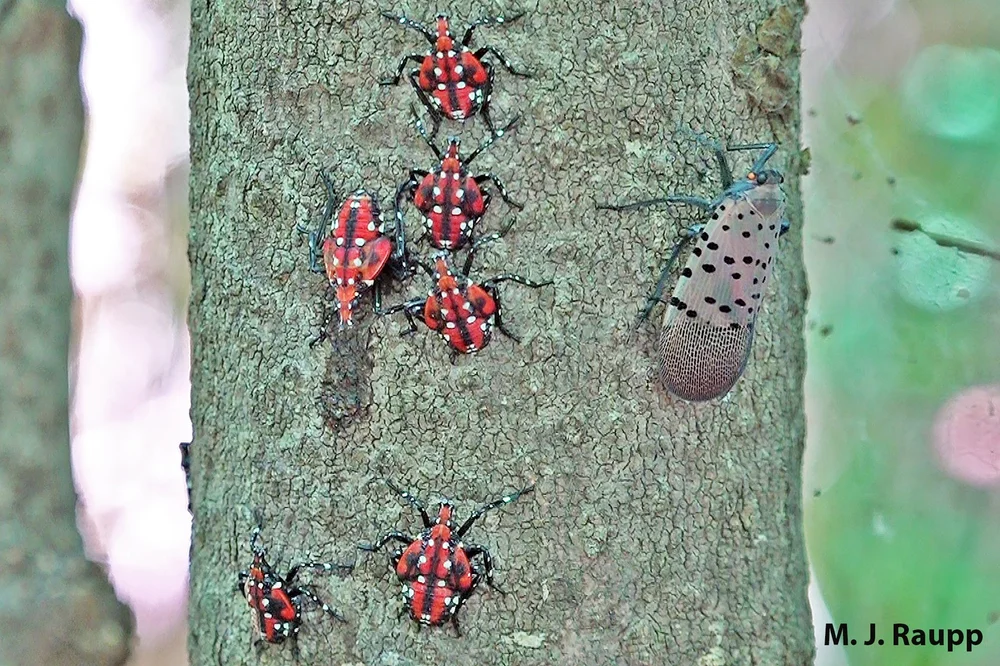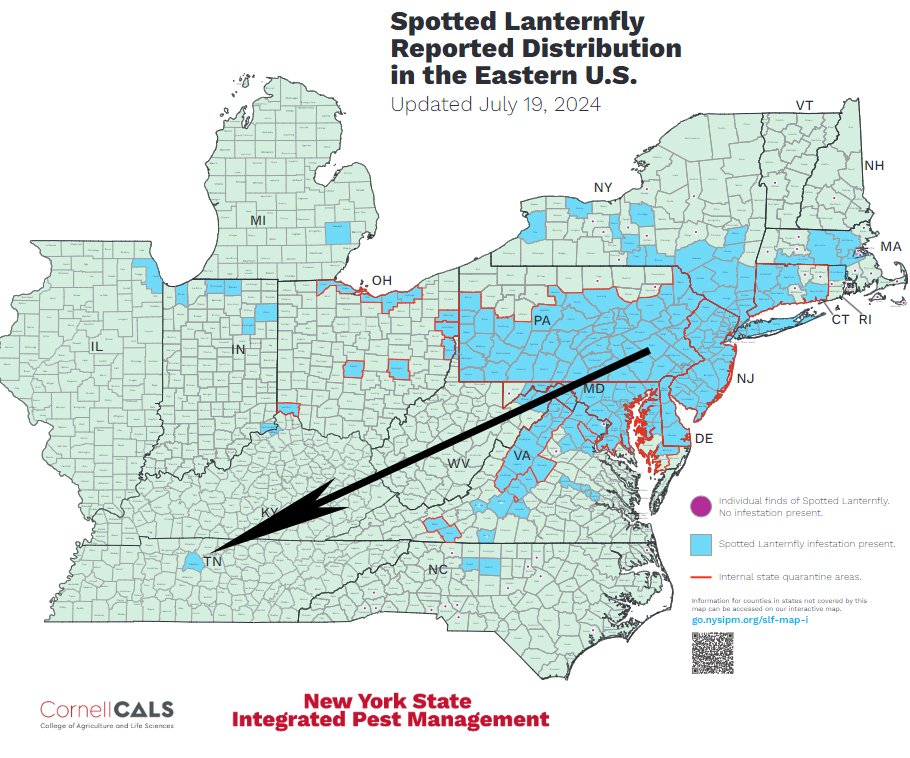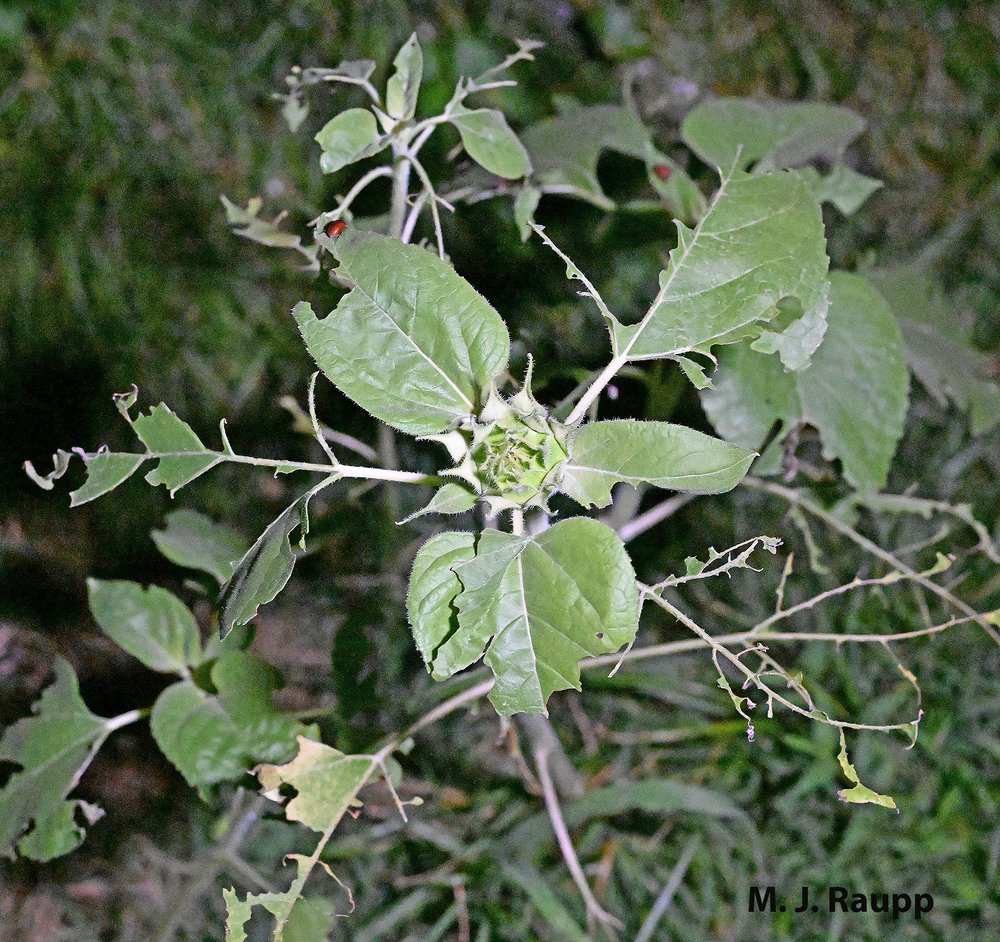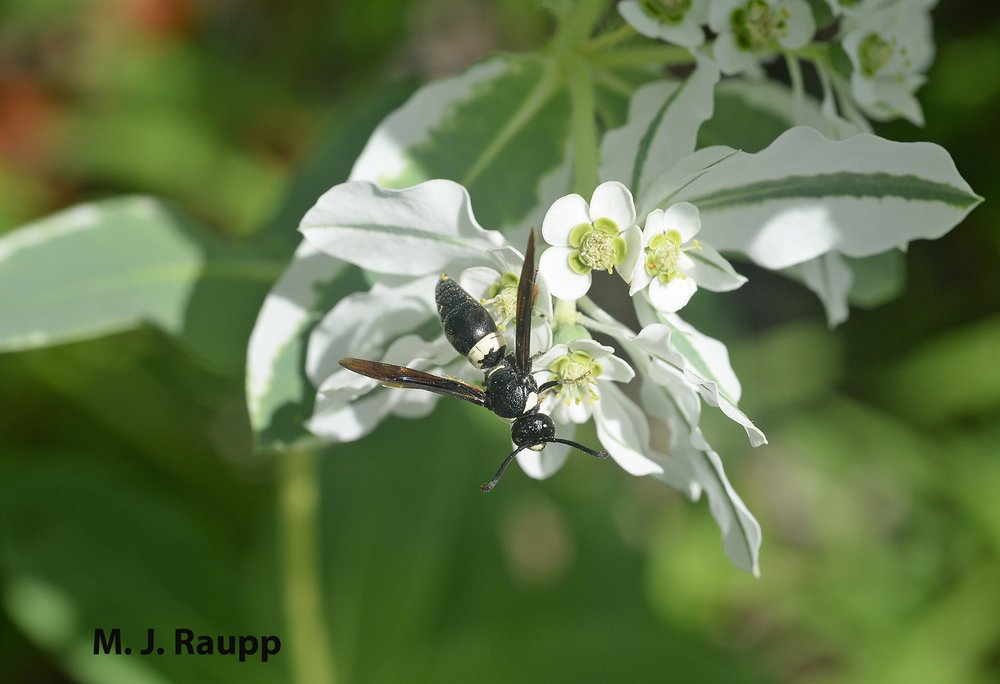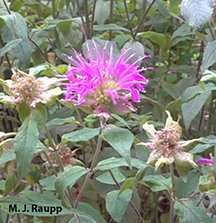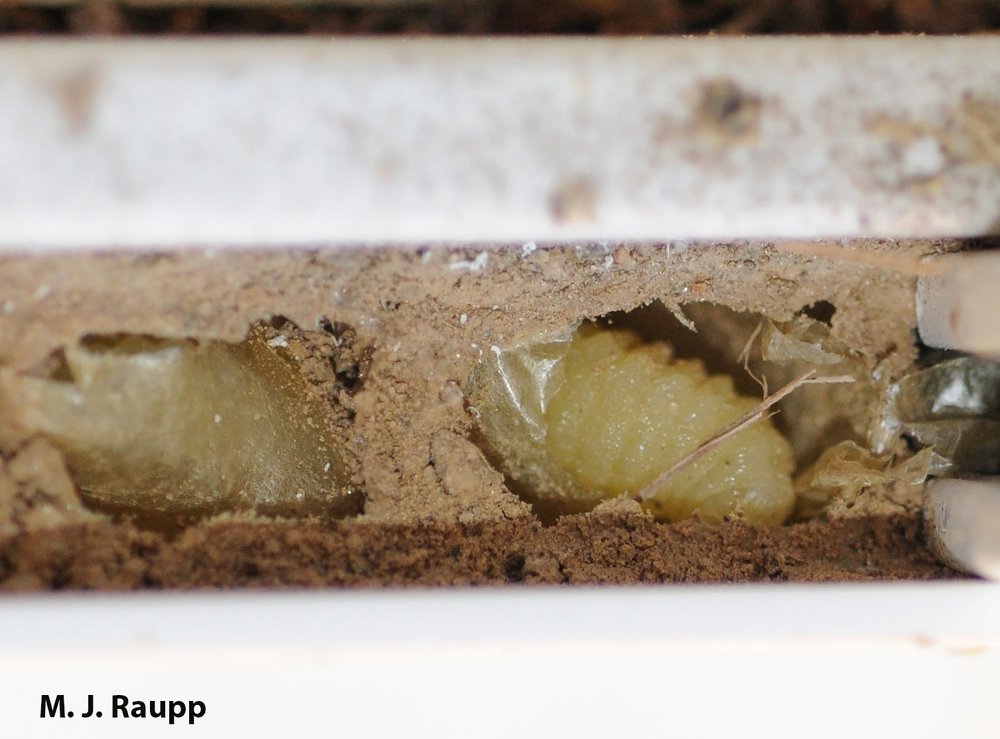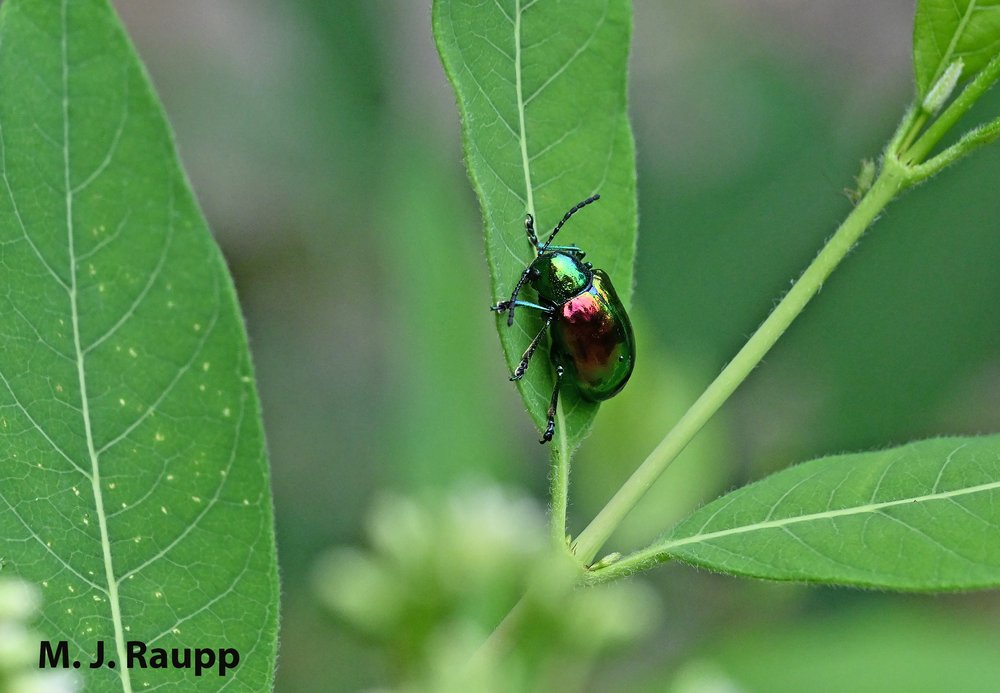
In the meadow, beautiful dogbane leaf beetles can be found dining on leaves of dogbane.
In midsummer, meadows abound in wildlife. While visiting a patch of dogbane, I stumbled across two leaf-eaters gobbling leaves of dogbane. One was a real beauty and the other, well, more of a messy beast. The beauty is perhaps the most gorgeous of all insects in the meadow, the dogbane leaf beetle, Chrysochus auratus. The scientific name Chrysochus auratus comes from the Greek and refers to “goldsmith” and “gold.” One look at the fantastic metallic hues of blue, green, gold, and red on the surface of the beetle tells it all. This beetle has no accepted common name, but it is often referred to as the dogbane leaf beetle due to its habit of feeding almost exclusively on plants in the genus Apocynum, herbaceous plants we refer to as dogbane. Dogbane grows along roadsides and trails near the forest edge. It is a perennial with clusters of small white flowers. If you damage a leaf or stem, it oozes a white sticky sap. There in full view, with luck you will find the dogbane leaf beetle. It is a wonder that an insect so conspicuous can survive in a world where birds, toads, and mice dine on insects with gusto.
Ah, but there is a secret to the dogbane beetle. The dogbane plant, like its relative the milkweed we met in a previous episode with its nemesis the milkweed longhorned beetle, is full of highly poisonous compounds known as cardenolides. These compounds are toxic to a variety of animals, including humans. Cardenolides are also known as cardiac glycosides and they can have profound and lethal effects on the heart if ingested. It is likely that these compounds evolved to keep leaf-munching animals from eating dogbane. The clever Chrysochus has the ability to eat the leaves of dogbane unscathed. Instead, it ingests cardiac glycosides, stores them in glands, and then secretes them when threatened by its own predators. It is believed that these toxic compounds confer protection from hungry predators that would otherwise devour Chrysochus. The conspicuous color and tendency for the beetle to feed and rest in full sight of its enemies are probably the beetle's way of advertising its nasty chemical defense. The biological message is this: “That's right, I'm bad, don't even think of eating me.”
When the goop is just too much to handle, a backward stroll helps the dogbane beetle to rid its mouthparts of sticky latex.
In the ongoing struggle between dogbane and Chrysochus, it looks like the beetle has the upper hand, right? Well, not exactly. Dogbane has yet another trick to foil its herbivores. In addition to nocuous glycosides in their tissues, the sap of dogbane is a sticky, white liquid similar in consistency to latex paint. Insects attempting to eat dogbane soon find their jaws gummed-up with a rapidly hardening gob of goop. The dogbane beetle has a crafty trick to rid itself of this sticky mess. After nibbling for a while, the dogbane beetle does a moon walk while dragging its mouthparts on the leaf to wipe-off the sticky dogbane latex. Once free of the latex, it moves to a new spot to resume its feast.

As they age, dogbane webworms will change color from leaf-blending green to aposematic orange.
In addition to a beautiful beetle, dogbane is attacked by another herbivorous insect which some might consider more on the ugly side. Dogbane webworm is the larval stage of what is known as the panic moth. Young caterpillars of this species are green in color, which help them avoid hungry eyes of predators by blending in with leaves of dogbane. As they grow and their webs enlarge, they assume an orange color with contrasting black spots making them quite conspicuous. In a series of clever studies, Dr. Jacqualine Grant demonstrated that the aposematic orange coloration of dogbane webworms likely served as a warning to predators. Simulated predatory attacks resulted in caterpillars regurgitating gut contents laden with nasty compounds capable of repelling predators. Once again, an herbivorous insect turned the tables on chemically defended dogbane and used dogbane’s noxious chemicals for its own defense.
In addition to beautiful dogbane leaf beetles, patches of dogbane are frequented by tent-making dogbane webworms. As they grow, they become more orange in color to warn predators of their nasty defense, gained from ingesting dogbane’s noxious chemicals. Feeding by these caterpillars puts a beatdown on dogbane plants.
Now is a great time to explore the meadow to enjoy these marvelous beetles and creepy caterpillars and witness the ‘tit for tat’ relationship they have with their chemically defended host.
Acknowledgements
Information for this week’s episode came from “The Love of Insects” by Thomas Eisner, “Deactivation of plant defense: correspondence between insect behavior and secretory canal architecture” by Dave Doussard and Bob Denno, and “Ontogenetic colour change and the evolution of aposematism: a case study in panic moth caterpillars” by Jacqualine B. Grant. We thank Deak and Sheri for sharing their dogbane patch and Master Naturalist students at Nature Forward that provided the inspiration for this episode.
